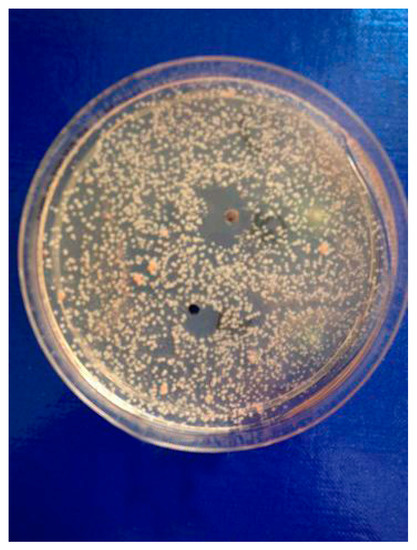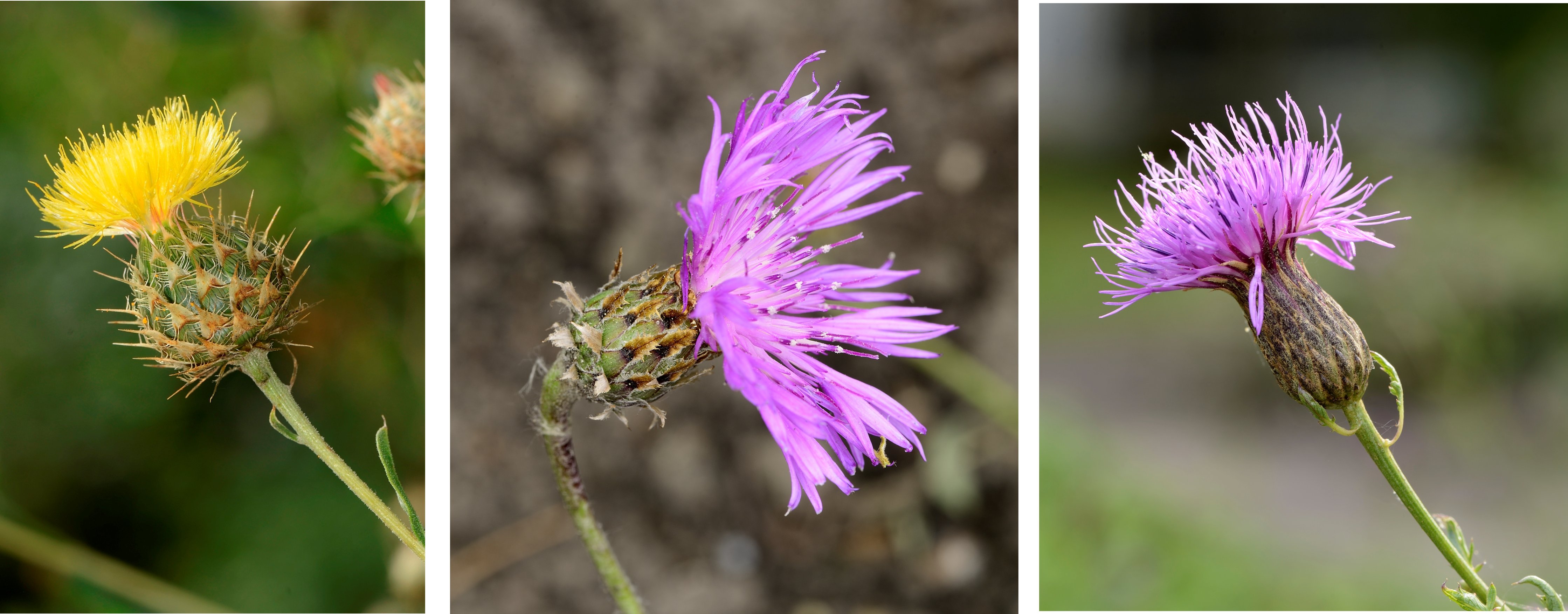Recent studies show that searching for new possibilities of phytotherapy using compounds isolated from Centaureinae plants is worth the effort. Treatment based on active substances from plants of the Centaureinae subtribe is often effective and does not cause side effects, as was demonstrated on an example of antifungal infections and SD and melasma and lentigo solaris treatment.
- Centaureinae,
- sesquiterpene lactones
- coumarins
- phytoecdysones
- arbutin
Note:Dear author, the following contents are excerpts from your papers. They are editable. And the entry will be online only after authors edit and submit it.
Definition:
Sesquiterpene lactones, coumarins, phytoecdysones and phenolic compounds are characteristic of the species from the subtribe Centaureinae (Asteraceae). Many of the compounds isolated from plants of the Centaureinae subtribe have strong pharmacological properties. It may be suggested that these compounds’ chemical structure might be an indicator of these pharmacological properties. The aim of the study was to describe recent studies in the field of phytotherapy, focusing on compounds isolated from chosen plants of Centaureinae and the possibilities of using them to treat antifungal infections, inhibit serotonin and ease symptoms of seborrhea dermatitis and hyperpigmentation. The results of these biological studies have shown that in the future, extracts from the above-mentioned plant material may be used as active substances in new safe and effective drugs.
1. Introduction
For a long time, pharmacologists have been analyzing natural compounds, such as sesquiterpene lactones, coumarins, phytoecdysones and phenol glucosides, isolated from the plants of the Asteraceae family.
Special interest has been given to sesquiterpene lactones because of their strong pharmacological properties [1]. Sesquiterpene lactones isolated from Matricariae flos, Arnicae flos and Millefoli herba have anti-inflammatory effects [2]. It has been established that sesquiterpene lactones can inhibit DTH (Delayed-Type Hypersensitivity test), especially contact dermatitis induced by intratracheal administration of hapten [3]. Guaianolides and germacranolides are the two types of sesquiterpene lactones most commonly found in species of Centaureinae subtribe, Asteraceae family.
It is also interesting to note that the presence of those two types of compounds occurring in the subtribe Centaureinae (Asteraceae) plants is related to the morphological structure of those plants' flowers. Stizolophus balsamita (Lam.) K. Koch, is a plant which flowers have appendages (not covering the bracts) with a stout apical spine. There are germacranolides in plants with this morphological feature. Psephellus bellus (Trautv.) Wagenitz, is a plant were the appendages of the flowers they are not tipped with a sharp spike. This feature determines the biosynthesis of guaianolides in this Centaureinae plant. The absence of sesquiterpene lactones in some species from Centaureinae plants might be reflected their morphological features (flowers with bracts without appendages) what may be observed in the species of the Serratula L genus (Figure 1)[4].
Figure 1. Stizolophus balsamita, Psephellus bellus, Serratula coronata
Natural steroids (phytoecdysones) are a class of natural compounds found together with b-arbutin in species of the genus Serratula (Centaureinae).
Coumarins, on the other hand, often accompany guaianolides in species of the genus Psephellus Cass. (Centaureinae).
Coumarin compounds isolated from Centaureinae plants may be treated as chemotaxonomy markers for the Psephellus genus [4]. 7-hydroxycoumarin (umbelliferone) can absorb UV light in the range of 280–315 nm, and it is therefore used for anti-UV cosmetics production [5], and it is one of the active substances appearing in the root and herb of Hieracium pilosella L., a plant with proven antifungal properties [6].
2. Selected Centaureinae (Asteraceae) Plant Materials in Phytotherapy
2.1. Phytotherapy Possibilities for Treating Fungal Infections
Fungal infections affect about 40% of the world′s population and may be viewed as an epidemiological, therapeutic and social problem. Over a billion people are directly affected by mycoses globally, 150 million of whom have a serious or life-threatening infection [42]. Fungal infections can cause serious illnesses, several of which may be fatal if left untreated. Commonly used antibiotics change human microflora and consequently increase the number of people with impaired immunity [43].
Such factors as the development of industry, agriculture, technology and life extension make the population more susceptible to infections [44]. The number and variety of fungi causing infections are increasing all over the world. Not only in different parts of the world but sometimes even within one country, there are differences in fungal flora, and species of fungi can be identified with variable frequency of occurrence. Among most commonly occurring fungi infections are aspergillosis, coccidioidomycosis, candidosis, cryptococcosis, mycetomas, histoplasmosis, mucormycosis, and paracoccidio-idomycosis [45].
Conventional antifungal treatment is based on polyene agents, flucitosine and azole agents, or more recently, on virulence factor inhibitors and immunomodulators. This has led to the production of new and improved azoles and polyene formulations, as well as a new family of drugs, the echinocandins [46].
The measurements were taken for three days from Candida cultures and 14 days from the dermatophytes and mold fungus (Scopulariopsis brevicaulis). The assessment of compounds′ antifungal activity on Candida albicans was only possible in the case of cebellins 2–4 mixture and cebellin A (11) due to the difficulties with growing these fungi strain cultures. Other strains turned out to be easier to grow, which is why the antifungal activity of all of the studied compounds could have been observed [50].
The most significant number of fungi (among them Candida albicans, Microsporum canis and Rhodotorula rubra) strains turned out to be very susceptible to cebellins 1–4 from the P. bellus herb (Figure 2). These compounds are the most lipophilic of the studied lactones. [47].

Figure 2. The results of susceptibility assessment of Rhodotorula rubra to the mixture of C-2 ester guaianolides (compound 1 inhibition zone diameter = 12, compounds 2–4 inhibition zone diameter = 22 mm).
Yeast-like fungi Candida famata and C. glabrata, as well as dermatophytes from the Trichophyton genus, T. rubrum and T. mentagrophytes var. interdigitale, were the most susceptible to the analyzed compounds. The highest potency of the P. bellus herb extract was shown (inhibition zone′s diameter reached 34 mm) [50].
2.2. Possibilities for Phytotherapy in Serotonin Inhibition
Chronic migraine headaches are an important health problem. A headache in a migraine episode is described as hemicranial, pulsating and so intense that it strongly interferes with the patient’s everyday life [51]. One explanation of the origin of migraines is the “serotonin theory”, confirmed by the increased excretion of serotonin metabolites in urine during the headache episode. Serotonin (5-HT) is released from platelets, which causes contraction of the smooth muscle of the blood vessels [52]. Afterward, as a result of biochemical changes, the serotonin level decreases, causing vasodilation and an increase in vascular permeability, allowing the flow of substances able to lower the sensitivity threshold of perivascular space nociceptor [53].
Parthenolide (31) is a sesquiterpene lactone derived from the leaves of Feverfew (Tanacetum parthenium) and is considered the main bioactive component of this herb [54]. Feverfew is used orally or as an infusion for the treatment of migraine, arthritis, fever and stomachache [55]. Parthenolide (31) reduces the cellular level of GSH in cancer cells, followed by ROS accumulation and apoptosis [56]. Parthenolide’s ability to induce cell death, mainly in cancer cells, while sparing healthy cells is unique and may be linked to the presence of 4,5-epoxide, lactone ring and an exo-methylene [57]. The compound also protects normal cells from UVB and oxidative stress, and it seems to have the potential to target some cancer stem cells [58].
2.3. Phytotherapy’s Possibilities in Treating Seborrheic Dermatitis
The bothersome symptoms of seborrheic dermatitis (SD) are difficult to control. SD is a chronic dermatitis characterized by erythema and skin flaking, which occur most often on the face, scalp, ears, chest and body folds—in other words, places with a high concentration of sebaceous glands [64].
20-hydroxyecdysone derivatives found in plants of the Serratula genus, when applied to the skin, restore dermis and strengthen protective functions of the epidermis, making the skin more hydrated and resilient. Phytoecdysones may therefore be used in dry and very dry skin care and eases such symptoms as ichtyosis and psoriatic conditions [65]. Phytoecdysones are able to activate keratinocytes and increase their amount and differentiation, which is why those compounds are used in projects of creating artificial skin [66].
It is postulated that phytoecdysones may have a significant impact on the reduction of inflammation, probably through their immunomodulatory function and the modulation of proinflammatory cytokines level (e.g., IL-6, TNF-α) [67]. Moreover, it has been reported that phytoecdysteroids improve skin quality by accelerating the healing process of wounds and burns [68]. Several studies [69] have claimed associations between Malassezia restricta lipase and seborrheic dermatitis. In light of this, ecdysteroids, especially 20-hydroxyecdysone (41), probably enhance antifungal immunity, resulting in the reduction of disease symptoms [70].
Ecdysteroids from plants of the Centaureinae subtribe are characterized by two OH groups on C2 and C3. Some, though only those of vegetable origin, have extra hydroxyl groups on C1, C5 and C11 (Table 1). The presence of those additional groups seems to translate into increased safety in use [71].
2.4. Phytotherapy’s Possibilities in Treating Skin Discoloration
Skin hyperpigmentation is a common cause of patients’ visits to beauty shops and dermatological clinics. Usually located on the exposed parts of the body (face, neck, neckline, forearms and backs of the hands), these changes may be the result of inflammation, endocrine disorders and systemic diseases, as well as UV radiation, phototoxic or photoallergic substances contained in medicines, herbs and cosmetics. They occur due to the disturbance of melanin synthesis and abnormal distribution of melanin in the skin [72].
Lighter skin tones have long been associated with youth and beauty among a variety of Asian cultures. Investment in skin-whitening agents, boosted by markets in Asian countries, especially those in China, India and Japan, is increasing annually. Skin color is influenced by a number of intrinsic factors, including skin types and genetic background, and extrinsic factors, including the degree of sunlight exposure and environmental pollution [73].
Cosmeceuticals are commonly used for hyperpigmentation. These disorders are generally difficult to treat, hence the need for skin-lightening agents. Arbutin in cream is used as a first choice in treating hyperpigmentation [74].
β-arbutin, phenol glucoside, is a compound with anti-inflammatory effect. Moreover, its mechanism of action is based on inhibiting the activity of tyrosinase, a vital enzyme in the process of melanin synthesis [75]. As it was possible to isolate an unexpectedly large quantity of β-arbutin (42) from St. quinquefolia plant material without methylarbutin and hydroquinone (Figure S7) [14], water extract from the leaves of S. quinquefolia was used for biological studies. The extract was tested during the clinical trial for their efficiency in skin discoloration, specifically melasma and lentigo solaris treatment. A cream containing 2.51% of active compound was applied to the discolored place twice a day—in the morning and the evening (one application of 100 mg = 2.5 mg of the active substance)—for eight weeks [76].
The cream with this extract decreased melanin level in the skin pigmentation spots. The clinical effect, in the form of lightening and evening skin tone on the discolored side, was observed in 75.86% of the female patients with melasma and 56.00% of the female patients with lentigo solaris. The cream with the aqueous extract from the leaf of five-leaf Serratula proved to be an effective and safe preparation for lightening skin discoloration (66.67% of the female patients in the study group) [76].
3. Conclusions
Recent studies show that searching for new possibilities of phytotherapy using compounds isolated from Centaureinae plants is worth the effort. Treatment based on active substances from plants of the Centaureinae subtribe is often effective and does not cause side effects, as was demonstrated on an example of antifungal infections and SD and melasma and lentigo solaris treatment.
There seem to be a correlation between the chemical structure of compounds and their pharmacological properties, which may be helpful, e.g., in selecting the right biological studies for specific compounds. Further research is needed on this issue.
This entry is adapted from the peer-reviewed paper 10.3390/molecules25225329

